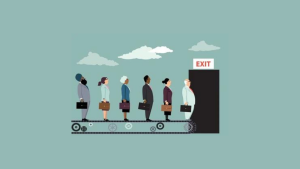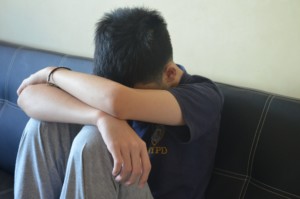
The Great Resignation: many rationales to attrition
The Great Resignation, also known as the Great Reshuffle and the Big Quit refers to an economic situation where employees voluntarily quit their job en

The Great Resignation, also known as the Great Reshuffle and the Big Quit refers to an economic situation where employees voluntarily quit their job en

The arrival of your baby is no less than a joyous moment. The wait is finally over and you look forward to the next chapter

Loneliness: Not Just An Emotional State, But A Physical Risk Too This is the third, concluding post in our World Health Day series. The first

Most of us have, at some point, found ourselves in the midst of suicidal thoughts. At least once, most of us might have thought about ‘ending it all’ or wished we could just ‘stop existing’ out of sheer exasperation. Having a fleeting thought about taking one’s life when feeling completely helpless about a life situation is natural. However, most of us move past it and we try dealing with our issues in some way or another.

This is a small story, holding a big message.. Hope It Inspires You 🙂
A Professor began his class by holding up a glass with some water in it.
He held it up for all to see & asked the students “How much do you think this glass weighs?”
’50gms!’….. ‘100gms!’ …..’125gms’ …the students answered.
“I really don’t know unless I weigh it,” said the professor, “but, my question is:
What would happen if I held it up like this for a few minutes?”
‘Nothing’ …the students said.
‘Ok what would happen if I held it up like this for an hour?’ the professor asked.
‘Your arm would begin to ache’ said one student.
“You’re right, now what would happen if I held it for a day?”
“Your arm could go numb; you might have severe muscle stress & paralysis & have to go to hospital for sure!” … Ventured another student & all the students laughed
“Very good. But during all this, did the weight of the glass change?” Asked the
professor.

We specialize in combining psychotherapy with deep wellness practices like mindfulness and meditation and creating a customized mental health plan for individuals and organisations.
We specialize in combining psychotherapy with deep wellness practices like mindfulness and meditation and creating a customized mental health plan for individuals and organisations.

A young woman from another country moved with her family to live for one year in a town near the monastery. When, in the course of the year she discovered the monastery, she would periodically visit to have discussions with the Abbess. The Abbess introduced her to meditation, which became very meaningful for the young woman.
When the family’s year-long stay was drawing to an end, the young woman asked the Abbess, “In my country there is no Buddhism and no one has even heard about meditation. How can I continue to learn and deepen the practice you have started me on?”
The Abbess said, “When you return home ask far and wide for who, among the wise people, is recognized as having the greatest ability to listen. Ask that person to instruct you in the art of listening. What you learn about listening from such a person will teach you how to further your meditation practice.
― Gil Fronsdal, A Monastery Within: Tales from the Buddhist Path